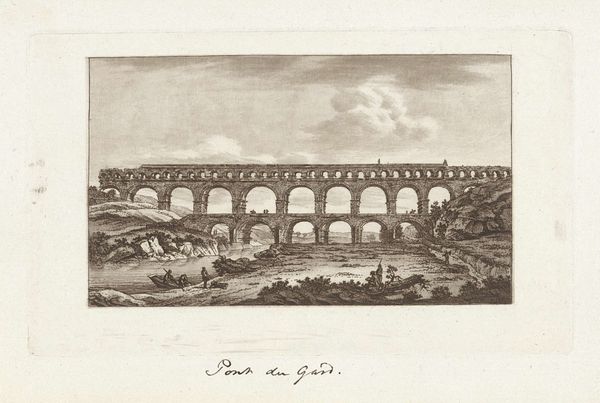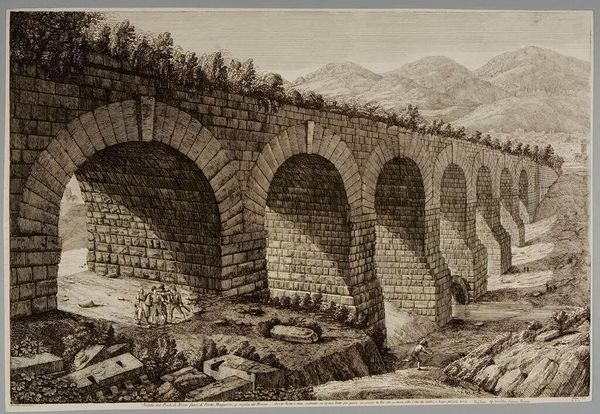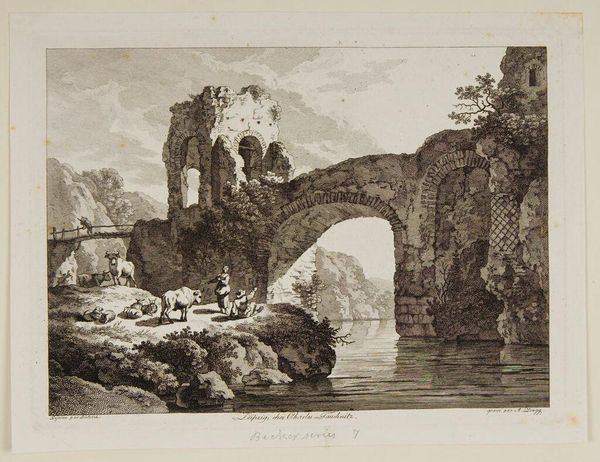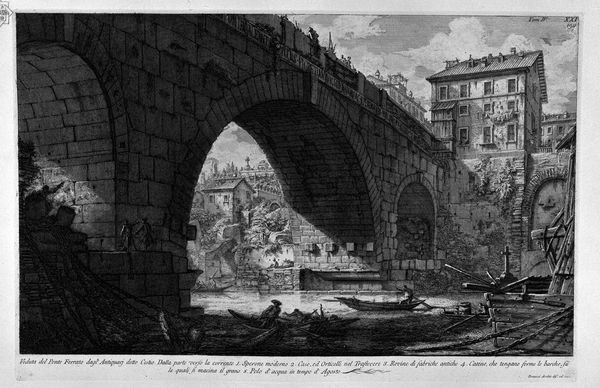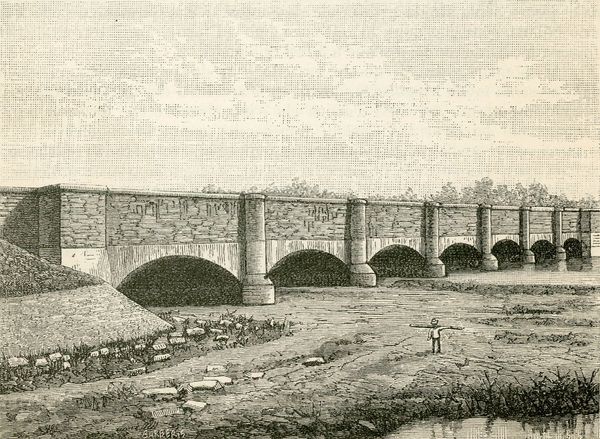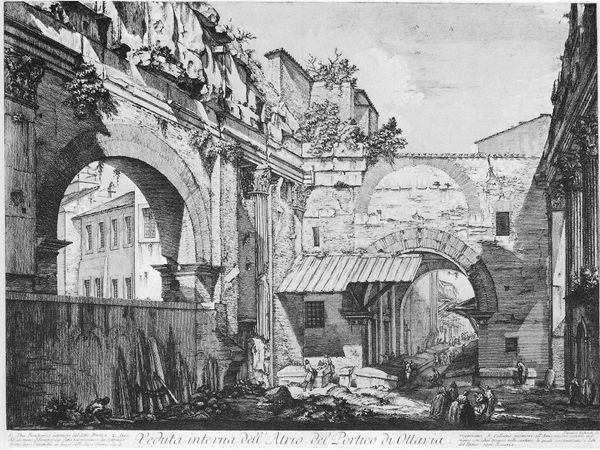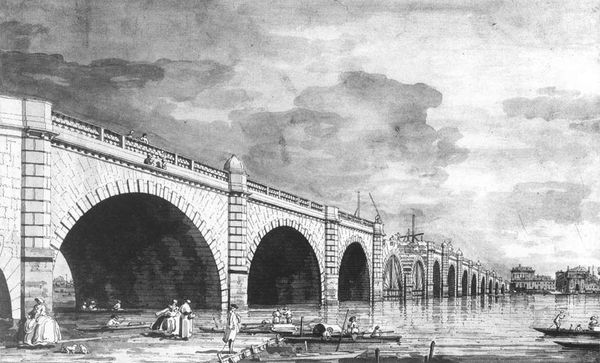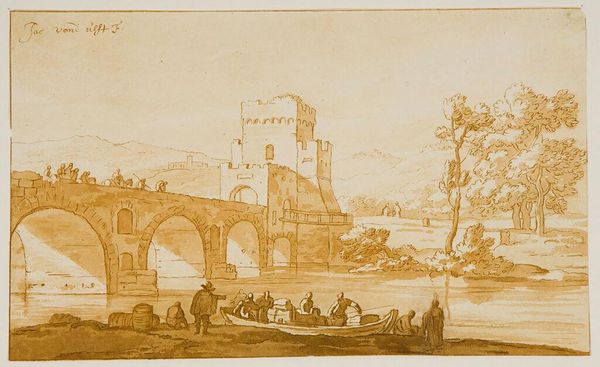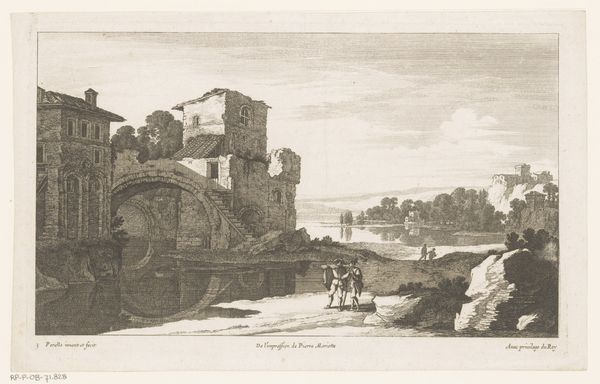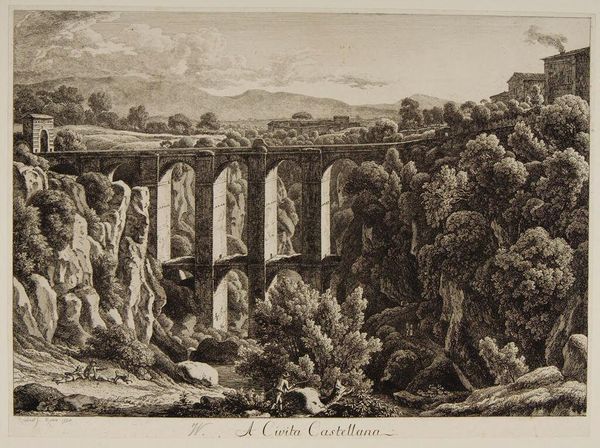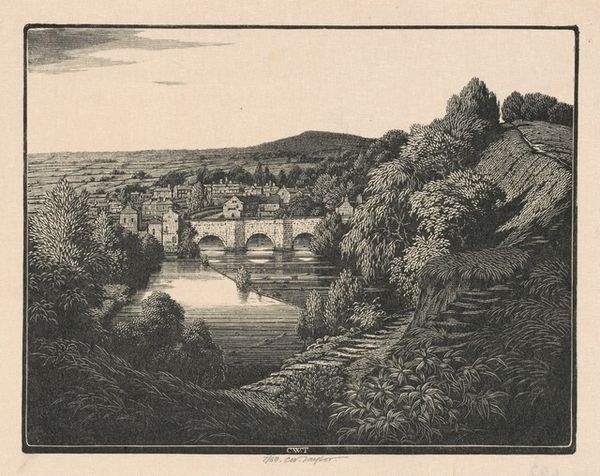
print, engraving
#
baroque
# print
#
landscape
#
cityscape
#
engraving
Copyright: Public domain
Curator: Giovanni Battista Piranesi’s “Coliseum and Flavian's Amphitheatre in Rome,” created in 1748, is rendered through the meticulous art of engraving. The work presents us with a stark contrast of light and shadow. Editor: My first impression is one of grandeur tinged with decay. There's a definite tension between the architectural mastery of the coliseum and the crumbling, overgrown elements that suggest the ravages of time and the indifference of nature. Curator: Absolutely, the print medium itself contributes to this atmosphere. The precise lines and dense cross-hatching allow Piranesi to capture intricate details of the amphitheater's structure. The contrasts certainly speak to the Baroque interest in dramatic effect. Editor: Thinking about the amphitheater historically, one cannot ignore that these ruins were a constant, physical reminder to the citizens of Rome about power—who held it and who lost it. Piranesi completed many similar vedute depicting what might be described as ‘romanticized ruins.’ Curator: From a formalist perspective, observe how the composition directs the eye. Piranesi's use of perspective amplifies the scale of the structure and the way he plays with light creates texture. The sheer repetition of the arches establishes a powerful rhythm. Editor: And the figures clustered around the base are dwarfed by the architecture. They underscore a critical point—the public, whose fate and entertainment were once intertwined with this very structure, have changed throughout the history of Rome. What was once used to impress the populous with gladiatorial events is now merely an element within the modern cityscape. Curator: Piranesi is not merely documenting the Coliseum, he is, I think, creating a visual drama through the contrasting of lines. There's almost a theatrical sense to the image through the sharp delineation between foreground and background. Editor: Precisely. Considering the engraving was produced in the mid-18th century, it represents an evolving appreciation for the role of antiquity in civic and national identities and how visual culture shaped the views of history for audiences near and far. Piranesi created imagery consumed by the elite who made pilgrimages to the historic ruins. Curator: Analyzing how Piranesi deployed form and technique unveils this as more than simple architectural documentation. We get the palpable weight and sense of the past and how he invites contemplation. Editor: Yes, seeing how Piranesi rendered his understanding of public history as both grand theater and crumbling artefact has changed my view.
Comments
No comments
Be the first to comment and join the conversation on the ultimate creative platform.
